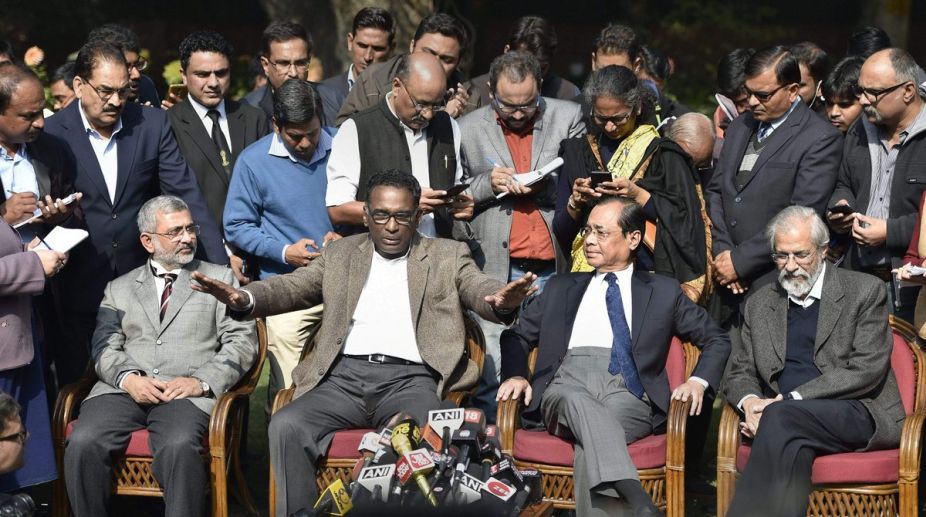The four dissenting Supreme Court (SC) judges — Justices Chelameswar, Kurian Joseph, Madan Lokur and Ranjan Gogoi on Thursday met Chief Justice of India (CJI) Dipak Misra to discuss a new mechanism of case allocation, reports said.
The second meeting in the last three days comes in the wake of CJI Misra reaching out to the four dissenting judges on Tuesday to resolve the rift with them over the issue.
The meeting was expected to take place on Wednesday but did not materialise as Justice Chelameswar did not attend the court because of his indisposition. He is expected to attend the court on Thursday.
The dissenting judges met late Wednesday evening with two other SC judges– Justice UU Lalit and DY Chandrachud and finalised a proposal which they submitted to the CJI in a bid to break the ongoing impasse, reports said.
The proposal calls for putting in place a “transparent” mechanism to allocate cases to different benches of the apex court.
During the Tuesday meeting, the sources had said, Justice Misra and the rebel judges had discussed all the outstanding issues, point of contentions and differences.
The sources said the Chief Justice took the initiative of meeting the four judges on January 16 as they were not satisfied with the outcome of a meeting of all judges held the previous day.
On January 15 a misplaced impression was generated that all the issues were resolved after Attorney General KK Venugopal had said that the events since January 12 were a “storm in a tea cup” and that “everything is settled”.
The country’s top court was hit by unprecedented crisis, after the four senior most judges at a press conference last week expressed their unhappiness about the functioning of the court and how cases were being allocated arbitrarily.
(With inputs from agencies)












